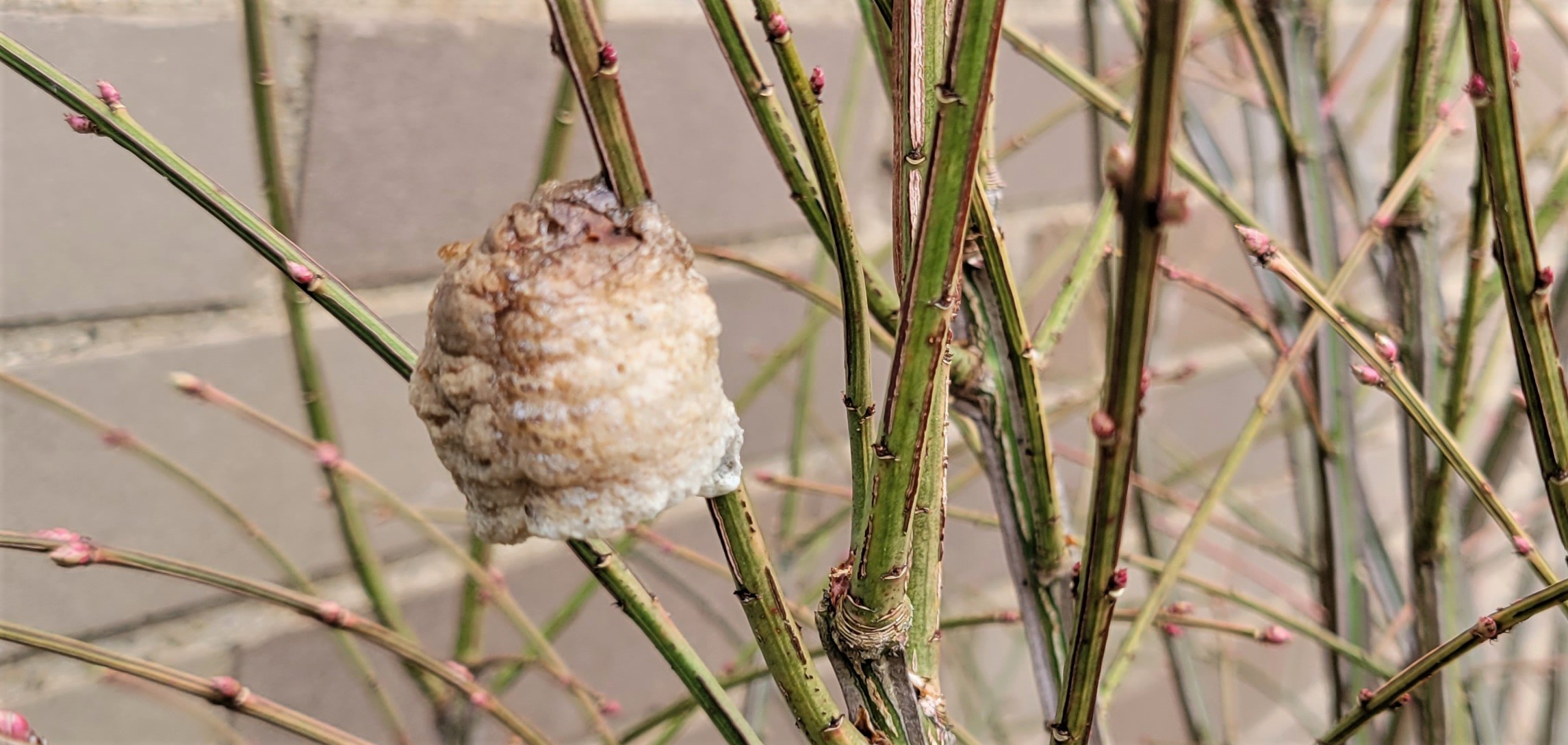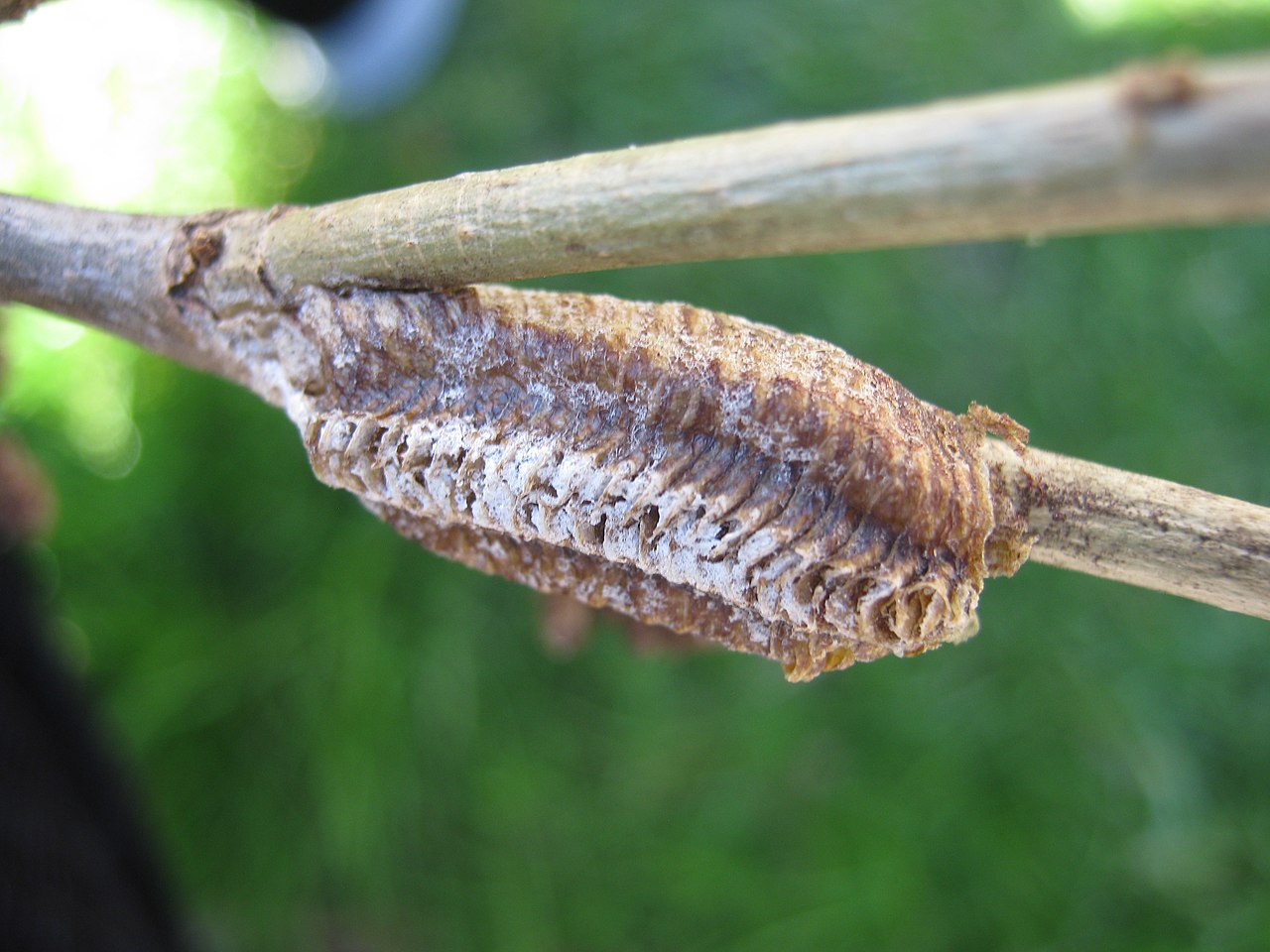Blog

#bioPGH Blog: Oothecae Abound!
 A resource of Biophilia: Pittsburgh, #bi oPGH is a weekly blog and social media series that aims to encourage both children and adults to reconnect with nature and enjoy what each of our distinctive seasons has to offer.
A resource of Biophilia: Pittsburgh, #bi oPGH is a weekly blog and social media series that aims to encourage both children and adults to reconnect with nature and enjoy what each of our distinctive seasons has to offer.
Over the weekend, I noticed a bulbous little shape stuck to the dried stem of one of my purple cone flowers from last year. I took a look to the side and saw another one stuck to a branch of my burning bush (it came with the house — we will replace it with something more appropriate!), then another two in the burning bush, and another in the next shrub, and then another — altogether I found six little “blobs” in a fairly small area. Any guesses what these abundant mysterious masses were?


They are “oothecae,” or singular “ootheca.” Egg cases! In this instance, they were the egg cases of praying mantises. Why so blobby? They made by foamy secretions that mantis females expel at the ends of their abdomens. When the foamy materials mix together, they dry to form a hard, protective covering for the eggs inside. Females will produce these egg cases in the fall, allowing the eggs to safely overwinter until hatching in the spring. If you happen to find one, though, be sure to leave it outside. The eggs’ hatching time are temperature-dependent and bringing them indoors can trigger an early hatch — your home would be full of hundreds of tiny mantis nymphs!
In the video below, you can watch a female Chinese mantis producing an ootheca:
The ootheca I found was most likely from a Chinese mantis, like in the video above. Pennsylvania is only home to one native species, the Carolina mantis (Stagmomantis carolina); but we are also home to three introduced species of mantis, Chinese mantis (Tenodera sinensis), narrow-winged mantis (Tenodera angustipennis), and European mantis (Mantis religiosa). As a comparison, an ootheca from the Carolina mantis is below, and you can see other examples here:

Carolina mantis ootheca, Beatriz Moisset CC-BY-SA-4.0
The benefit versus detriment from the presence of the three non-native species is somewhat debated: on the one hand, the non-native species do tend to devour pest insects, a natural form of pest management all on their own. Some companies even sell the egg cases of Chinese mantises specifically for that purpose. However, their predatory prowess is sometimes a bit overzealous as they don’t particularly distinguish between pests and pollinators, which can outweigh the benefit of their presence.
Intriguingly, though, these ootheca and the materials that comprises them have become of distinct interest to biomedical researchers in the last several years. If we were to look at the foamy substance on the molecular level, we would see that it includes a very special shape of protein (coiled coils), which may be the key to medical advances ranging from nanotechnology to vaccine delivery. Of course, this direction of study could only have come about from researchers who were purely interested in understanding mantis egg cases for their own sake. Exploration, learning, and discovery are never in vain.
So on that note, go discover your world! Finding these little egg cases feels like finding a hidden treasure — almost like nature is leaving little secrets behind. It's the joy of exploring!
Continue the Conversation: Share your nature discoveries with our community by posting to Twitter and Instagram with hashtag #bioPGH, and R.S.V.P. to attend our next Biophilia: Pittsburgh meeting.
Photo credits: Cover, Maria Wheeler-Dubas; Header, Luc Vicatour, CC-BY-SA-3.0

